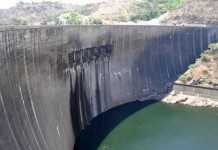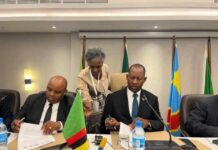ZESA Holdings is in talks with Lunsemfwa Hydro Power Company of Zambia to import electricity to boost domestic supply, officials from both companies said yesterday.
Zimbabwe’s power plants produce an average 1 200 megawatts, about half of its peak demand. The country is minimising power shortages through imports from the region. A delegation from Lunsemfwa is in Zimbabwe for negotiations, which, if successfully concluded would see Zimbabwe importing 50 megawatts from Zambia, Zesa chief executive Engineer Josh Chifamba said.
“This is part of our efforts to boost local supply through importing electricity from other sources in the region and we are negotiating for a power purchase agreement with Lunsemfwa,” Eng Chifamba told The Herald Business, adding that this was critical in terms of supporting Zim-Asset, the country’s economic blueprint.
Lunsemfwa Hydro is the first independent power producer in Zambia. It operates two hydropower plants with a total installed capacity of 56MW. LHPC is currently undertaking feasibility studies and has a strategic plan to increase the installed capacity to 500MW by 2020. LHPC is a subsidiary of Agua Imara, an SN Power Group company.
Eng Chifamba said he was confident negotiations would be concluded by mid next year.
Lunsemfwa Hydro chief executive Mr Katai Kachasa said if the current negotiations were successfully concluded, there was potential to gradually increase electricity supplies to Zimbabwe since it is planning to increase its generation capacity.
“We will soon be embarking on projects to increase our generation capacity,” said Mr Kachasa.
Eng Chifamba said the power purchase agreement would be on a pre-paid basis and Zesa would “continuously move all our customers” to pre-paid electricity meters to generate enough income to meet its import obligations. About 42 percent of Zesa’s income comes from customers on pre-paid meters and plans to grow it to 70 percent in first half of 2016.
“We need to get power challenges out of our way by growing prepaid revenue to 70 percent (of Zesa’s total revenue). This will not only improve revenue inflows, but will also enhance creditworthiness and capacity of the company to reinvest in critical capital projects,” said Eng Chifamba.
He added that Zesa recently reached an agreement with ferrochrome producers to go on prepaid metres. Zesa has also gone on prepaid arrangement for power imports from Mozambique where it is purchasing about 50 megawatts. As such, economic analysts say it was time Zesa grow its prepaid revenue considering that it is also paying for imports in advance.
“Despite increased revenues inflows from domestic customers, it is critical that all customers, domestic and commercial are put on prepaid metres. This will help guarantee imports while at the same time ensure that the company generates enough revenue for its capital projects as well as putting the company in a stronger position to attract debt capital from local, regional and international markets,” said one analyst.
On the back of prepaid income, Eng Chifamba said the power utility has successfully raised substantial money from a regional financial institution against its debtors’ book.

 JOIN DRIVERN TAXI AS PARTNER DRIVER TODAY!
JOIN DRIVERN TAXI AS PARTNER DRIVER TODAY!











